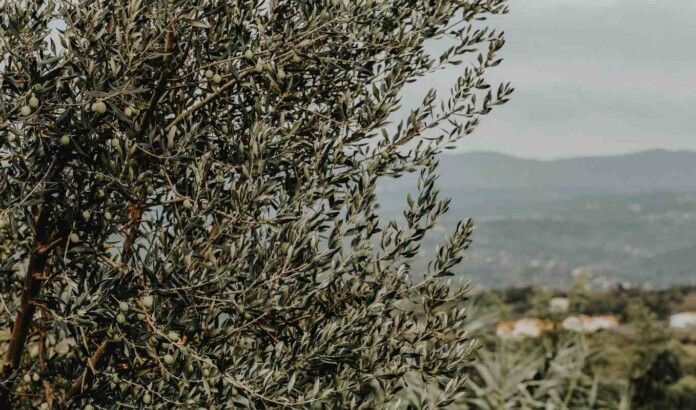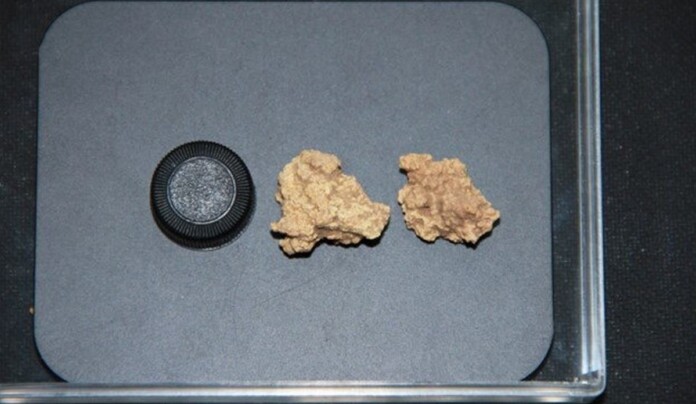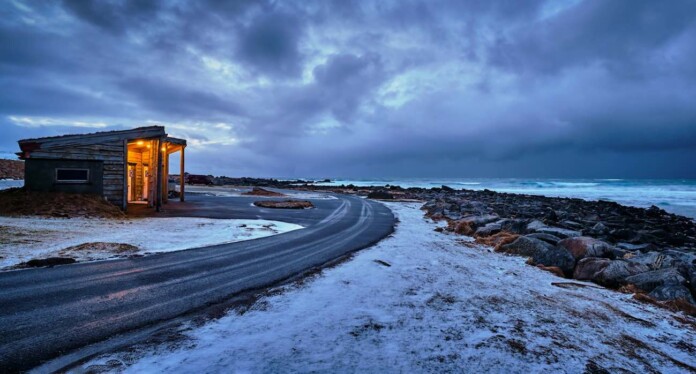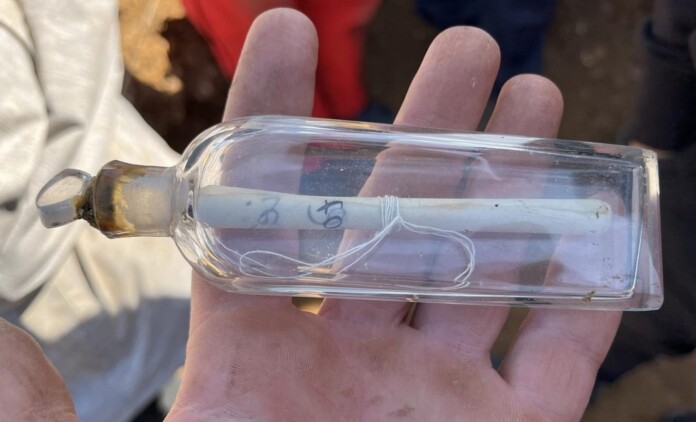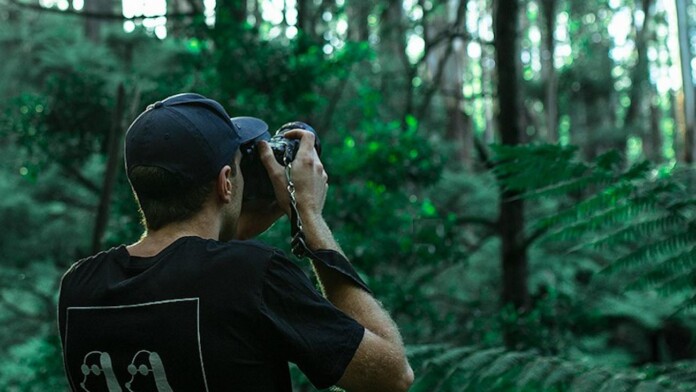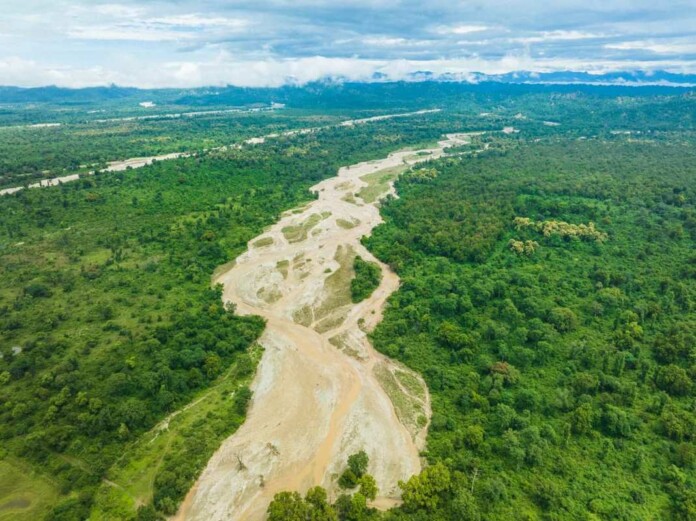143 years ago today, Ludwig von Mises, the most influential economist of the 20th century was born in Lemberg. Today, Mises is remembered not as the founder, but the master of “praxeology,” a study that forms economic theory based on human actions as the fundamental units of analysis. He published several seminal economic treatises throughout his life, and his lectures included an audience alumni of famous economists, including Nobel Prize winner Friedrich Hayek. READ about his inspirational immigrant story… (1881)
Stranger Carried a Senior Hiker for Hours on His Back After She Fell and Couldn’t Walk

A woman who broke her leg while hiking was rescued by a trio of strapping young whipper snappers, who carried her all the way down the mountain on their backs.
Even realizing she’d be alone for the 3.2-mile trek, Ursula Bannister had been confident of getting to the place where she scattered her mother’s ashes 23 years ago; she had gone up many times before.
For anyone who’s taken the trail to High Rock Lookout, a viewpoint near Ashford in Washington, they’ll know it’s hard and steep.
As the 79-year-old Bannister predicted, she made it to the top, left some flowers, and began heading back down. Catching a hole in the trail bed with her foot, she fell forward hard and by the time she turned herself right side up, she saw her foot was pointing the wrong way.
In pain she cried out for help, and before long a group of 3 young hikers came to her side and called 911. A search and rescue team said they’d be there in 5 hours, discouraging everybody.
20-year-old Troy May, an Air Force Airman, was hiking up to the lookout that day with his fiancé and a friend Layton Allen. Bannister asked them if they had any painkillers, to which they replied they did not, and realizing the woman had nothing to help her strap in for 5 upcoming hours of agony, May took action.
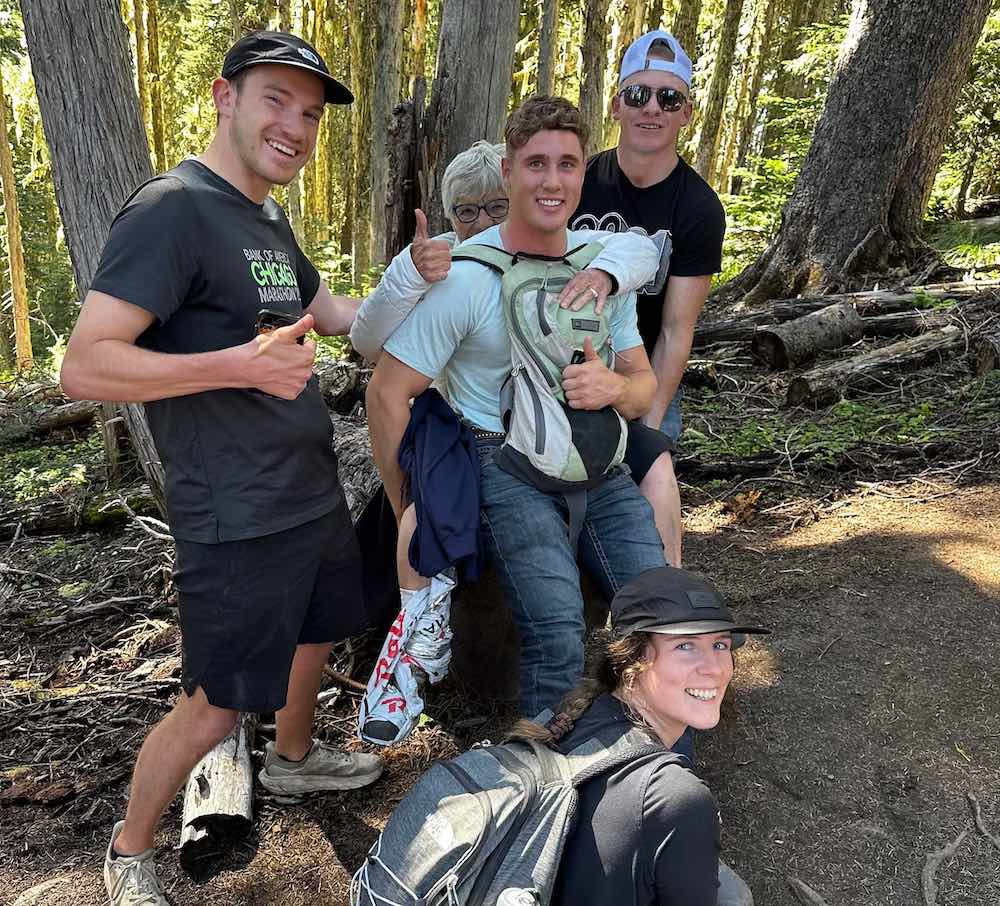
“I knew I was capable of carrying her down,” May told the Washington Post. “I really didn’t make much of a decision, I just knew I needed to carry her down if I could.”
Lifting her gently onto his back, he began the slow, careful journey downhill, hiking three-quarters of the 1.8 miles that remained on Bannister’s journey, while Allen took care of the home stretch. On the way they passed occupational therapist Emily O’Brien, who led Bannister through some breathing exercises, and physical therapist Tim Meyer who splinted her leg.
With the extra hands, May was able to move more assuredly, and keep enough puff in his lungs to talk to Bannister on the way down to try and keep her mind off the pain.
A SIMILAR KIND OF HERO: Trapped on Tiny Ledge, Fallen Hiker with Mangled Legs Rescued by Off-Duty Air Force Hero
They asked her about her life as a child moving to the United States from Germany in 1959, having been born just after the fall of the Third Reich, and May would later recall she had a lot of cool stories.
Once they arrived at the trailhead, Allen sped Bannister off to Tacoma General Hospital where doctors told her she had a compound break of the tibia, fibula, and heel bone. They were impressed with Meyer’s splint, and said it might have been a lot worse.
She would leave the hospital late that night as her leg was too swollen and inflamed to operate on.
MORE RESCUES ON THE TRAIL: 18-Year-old Uses Her Tracking Skills to Guide Hikers on Wildfire Evacuation Route
She would eventually receive 11 screws and a titanium plate, and embark on a long road to recovery that saw some of her rescue team come and visit her, including May who won an Air Force medal for his efforts.
“I was just overwhelmed with gratitude that these people literally came out of the woods to help me and they were totally unselfish and kind,” Bannister said, adding that the friendship she gained in May and the others was worth more than the pain and discomfort.
SHARE This Herculean Effort To Rescue This Stranded Senior…
In World First, Stem Cells Reverse Woman’s Type-1 Diabetes
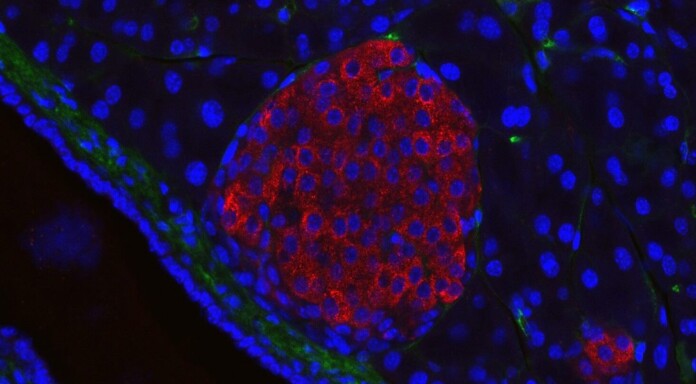
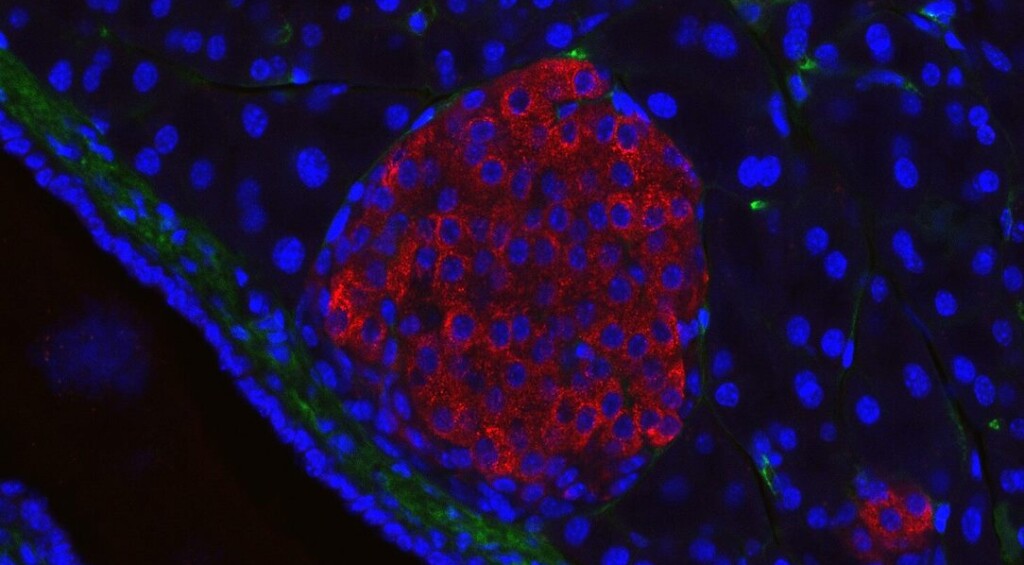
“I can eat sugar now,” said a woman from Tianjing, China, who recently became the first human to have their type-1 diabetes cured through a stem cell procedure.
Using the patient’s own stem cells, the results offer hope of limitless treatment options for type-1 diabetes, where special insulin-producing cells were previously needed from a donor.
Unlike type-2 diabetes which can be developed through poor diet and lifestyle choices, type-1 diabetes develops on its own in certain humans.
Type-1 diabetes is classified as an autoimmune disorder, as the immune system attacks islet cells in the pancreas responsible for producing insulin, a vital metabolic signaling hormone that instructs muscle tissues to absorb excess glucose and other sugars out of the bloodstream.
Treated with exogenous insulin and a mixture of immunosuppressants, the only thing like a cure is an islet-cell transplant, for which there are not anywhere near enough donors to meet the demand.
Instead, Chinese researchers reverse-engineered the patient’s own tissues to produce pluripotent stem cells which they then chemically reprogrammed to form islet cells. Once transplanted, the researchers, whose first subject was a 59-year-old man, observed he was producing his own insulin within 3 months, and after 4 months had a glycemic range that was 98% similar to that of a non-diabetic.
James Shapiro, a transplant surgeon and researcher at the University of Alberta in Edmonton, Canada, told Nature press that the results of the surgery are stunning. “They’ve completely reversed diabetes in the patient, who was requiring substantial amounts of insulin beforehand.”
In this more recent case of the young woman, the cultivated stem cells were injected during the surgery into the abdominal muscles—a new introduction site for this procedure. Previously, donor islets were transplanted into the liver, where they couldn’t be observed.
By contrast, in the abdominal tissue, the islet cells’ activity could be monitored with an MRI machine.
YOU MAY ALSO ENJOY: Lab-Grown Blood Stem Cells Could Replace Bone Marrow Donations for Transplants
Two-and-a-half months later, she was producing enough insulin to live without needing top-ups, and she has sustained that level of production for more than a year.
“That’s remarkable,” said Daisuke Yabe, a diabetes researcher at Kyoto University who wasn’t involved in the study. “If this is applicable to other patients, it’s going to be wonderful.”
SIMILAR NEWS TO THIS: Experimental Type 1 Diabetes Drug Shields Pancreas Cells from the Usual Crippling Immune System Attack
In the woman’s case, she was already taking immunosuppressants for a previous liver transplant, and so the researchers can’t confirm whether or not the new islet cells would be subject to the same autoimmune response as before.
Generally, medical researchers want to see years pass by of normal function before acknowledging that “curing” took place. The woman will reach the two-year mark in November. If she is still experiencing normal glycemic activity, cell biologist and lead author of the research Dr. Deng Hongku at Peking University Beijing, wants to expand the trial to between 10 and 20 people.
SHARE This One-Of-A-Kind Result In Battling This Dangerous Disease…
Spain’s Olive Oil Producers Turn Tons of Their Pits into Fuel–For Homes, Planes and Industry
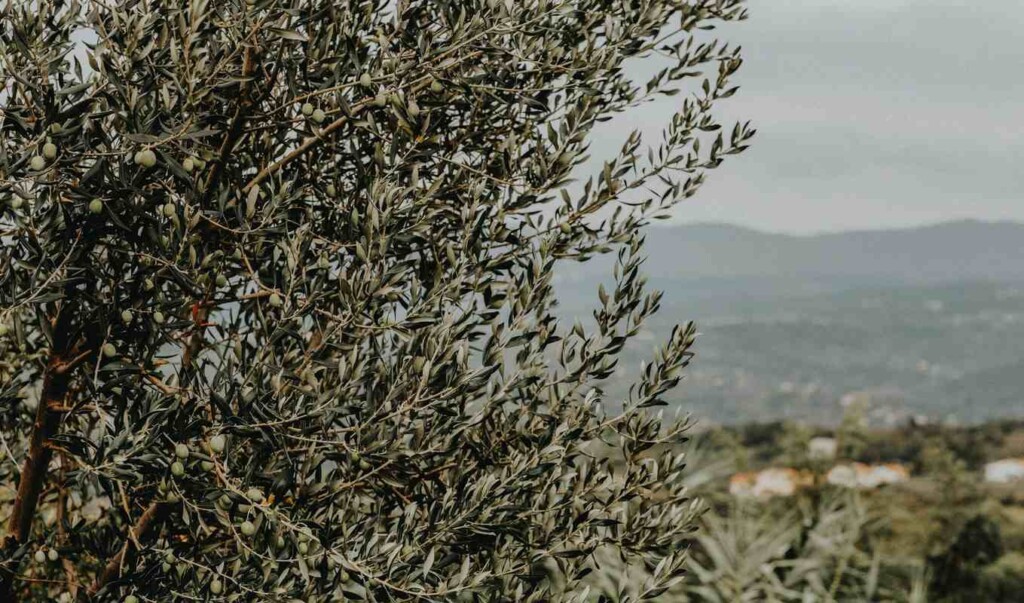
In a rather unique story from Reuters, the Spanish olive oil market is profiled for what it can do to power Spain’s homes, not just its economy and kitchens.
Accounting for half the production of olive oil in the EU, growers are now getting to sell olive pits as a valuable ingredient for biofuel. Hundreds of thousands of tons of olive pits are now being consumed in Spain every year to heat homes, power oil mills, and even airplanes.
Pits make up between 8% and 10% of an olive crop by weight. During the pressing stage in the oil production process, the pits are squeezed out and separated before being washed and dried to create fuel similar to wood pellets used in certain domestic stoves, grills, and fireplaces.
In the past, cultivators didn’t have a good idea of what to do with the olive pits, says Pablo Rodero, an affiliate with the Spanish biomass association, Avebiom. Avebiom estimates that 400,000 tons of olive pits are produced every year in Spain. That’s a lot of material to not know what to do with.
“Now everything is used,” Rodero told Reuters. “Olives are like pigs: Nothing goes to waste.”
According to Reuters, the energy shock from the Russian invasion of Ukraine that caused domestic heating prices to soar led directly to a further development of the olive pit industry as a fuel product.
One-third of all pits are now refined to remove as much moisture as possible and sold for around 300 euros per ton, which equates to around 6 cents per kilowatt-hour for home heating.
BIOFUEL DEVELOPMENT WORLDWIDE:
- Dubai Company Buys Used Cooking Oil to Turn Into Biofuel for Cars Citywide to Reduce CO2 Emissions
- From Beer to Biogas: Creating Green Energy Using Brewer’s Grain Farm Waste
- Jet Flown by United Airlines Entirely Powered by 100% Plant-Based Fuel from Corn Stalk Waste
- This Plant-Based Jet Fuel Can Reduce Emissions by 68% – Without Displacing Crops
The rest is used on the farms to drive the almazaras, or traditional olive mills, or sold to power industrial boilers.
Petro company Cepsa uses olive oil pits as the key ingredient in a sustainable aviation fuel blend that powered 200 flights out of Andalusia’s capital of Sevilla airport last year. Biofuels, usually made from old cooking oil, have been pioneered as more sustainable jet fuel in China and other parts of the globe.
It might seem strange to Americans who have to pay prime dollar for olive oil imports, but some farms and farming collectives pull in as much as a third of their revenue from pit sales.
SHARE This Unlikely Fuel Source From Sunny Spain…
Your Weekly Horoscope – ‘Free Will Astrology’ From Rob Brezsny
Our partner Rob Brezsny, who has a new book out, Astrology Is Real: Revelations from My Life as an Oracle, provides his weekly wisdom to enlighten our thinking and motivate our mood. Rob’s Free Will Astrology, is a syndicated weekly column appearing in over a hundred publications. He is also the author of Pronoia Is the Antidote for Paranoia: How All of Creation Is Conspiring To Shower You with Blessings. (A free preview of the book is available here.)
Here is your weekly horoscope…

FREE WILL ASTROLOGY – Week of September 28, 2024
Copyright by Rob Brezsny, FreeWillAstrology.com

LIBRA (Sept. 23-Oct. 22):
On the morning of January 27, 1970, Libran songwriter John Lennon woke up with an idea for a new song. He spent an hour perfecting the lyrics and composing the music on a piano. Then he phoned his producer and several musicians, including George Harrison, and arranged for them to meet him at a recording studio later that day. By February 6, the song Instant Karma was playing on the radio. It soon sold over a million copies. Was it the fastest time ever for a song to go from a seed idea to a successful release? Probably. I envision a similar process in your life, Libra. You are in a prime position to manifest your good ideas quickly, efficiently, and effectively.

SCORPIO (Oct. 23-Nov. 21):
You have passed the test of the First Threshold. Congratulations, Scorpio! Give yourself a kiss. Fling yourself a compliment. Then begin your preparations for the riddles you will encounter at the Second Threshold. To succeed, you must be extra tender and ingenious. You can do it! There will be one more challenge, as well: the Third Threshold. I’m confident you will glide through that trial not just unscathed but also healed. Here’s a tip from the Greek philosopher Heraclitus: “Those who do not expect the unexpected will not find it.”

SAGITTARIUS (Nov. 22-Dec. 21):
What development are you so ready for that you’re almost too ready? What transformation have you been preparing for so earnestly that you’re on the verge of being overprepared? What lesson are you so ripe and eager to learn that you may be anxiously interfering with its full arrival? If any of the situations I just described are applicable to you, Sagittarius, I have good news. There will be no further postponements. The time has finally arrived to embrace what you have been anticipating.

CAPRICORN (Dec. 22-Jan. 19):
Capricorn screenwriter and TV producer Shonda Rhimes has had a spectacular career. Her company Shondaland has produced 11 prime-time TV shows, including Grey’s Anatomy and Bridgerton. She’s in the Television Hall of Fame, is one of the wealthiest women in America, and has won a Golden Globe award. As you enter into a phase when your ambitions are likely to shine extra brightly, I offer you two of her quotes. 1. “I realized a simple truth: that success, fame, and having all my dreams come true would not fix or improve me. It wasn’t an instant potion for personal growth.” 2. “Happiness comes from living as your inner voice tells you to. Happiness comes from being who you actually are instead of who you think you are supposed to be.”

AQUARIUS (Jan. 20-Feb. 18):
I have performed in many poetry readings. Some have been in libraries, auditoriums, cafes, and bookstores, but others have been in unexpected places: a laundromat, a bus station, a Walmart, a grocery store, and an alley behind a thrift store. Both types of locations have been enjoyable. But the latter kind often brings the most raucous and engaging audiences, which I love. According to my analysis, you might generate luck and fun for yourself in the coming weeks by experimenting with non-typical scenarios—akin to me declaiming an epic poem on a street corner or parking lot. Brainstorm about doing what you do best in novel situations.

PISCES (Feb. 19-March 20):
I have two related oracles for you. 1. During the unfoldment of your mysterious destiny, you have had several homecomings that have moved you and galvanized you beyond what you imagined possible. Are you ready for another homecoming that’s as moving and galvanizing as those that have come before? 2. During your long life, you have gathered amazing wisdom by dealing with your pain. Are you now prepared to gather a fresh batch of wisdom by dealing with pleasure and joy?

ARIES (March 21-April 19):
Here comes the Hating and Mating Season. I want to help you minimize the “hating” part and maximize the “mating” part, so I will offer useful suggestions. 1. To the degree that you can, dissolve grudges and declare amnesty for intimate allies who have bugged you. 2. Ask your partners to help you manage your fears; do the same for them. 3. Propose to your collaborators that you come up with partial solutions to complicated dilemmas. 4. Do a ritual in which you and a beloved cohort praise each other for five minutes. 5. Let go of wishes that your companions would be more like how you want them to be.

TAURUS (April 20-May 20):
Many fairy tales tell of protagonists who are assigned seemingly impossible missions. Perhaps they must carry water in a sieve or find “fire wrapped in paper” or sort a heap of wheat, barley, poppyseed, chickpeas, and lentils into five separate piles. Invariably, the star of the story succeeds, usually because they exploit some loophole, get unexpected help, or find a solution simply because they didn’t realize the task was supposedly impossible. I bring this up, Taurus, because I suspect you will soon be like one of those fairy-tale champions. Here’s a tip: They often get unexpected help because they have previously displayed kindness toward strangers or low-status characters. Their unselfishness attracts acts of grace into their lives.

GEMINI (May 21-June 20):
You are in a phase with great potential for complex, unforeseen fun. To celebrate, I’m offering descriptions of your possible superpowers. 1. The best haggler ever. 2. Smoother of wrinkles and closer of gaps. 3. Laugher in overly solemn moments. 4. Unpredictability expert. 5. Resourceful summoner of allies. 6. Crafty truth-teller who sometimes bends the truth to enrich sterile facts. 7. Riddle wrestler and conundrum connoisseur. 8. Lubricant for those who are stuck. 9. Creative destroyer of useless nonsense. 10. Master of good trickery. 11. Healer of unrecognized and unacknowledged illnesses.

CANCER (June 21-July 22):
Tanzanite is a rare blue and violet gemstone that is available in just one place on earth: a five-square-mile region of Tanzania. It was discovered in 1967 and mined intensively for a few years. Geologists believed it was all tapped out. But in 2020, a self-employed digger named Saniniu Lazier located two huge new pieces of tanzanite worth $3.4 million. Later, he uncovered another chunk valued at $2 million. I see you as having resemblances to Saniniu Lazier in the coming weeks. In my visions of your destiny, you will tap into resources that others have not been able to unearth. Or you will find treasure that has been invisible to everyone else.

LEO (July 23-Aug. 22):
Marathon foot races are regularly held worldwide. Their official length is 26.2 miles. Even fast runners with great stamina can’t finish in less than two hours. There’s a downside to engaging in this herculean effort: Runners lose up to six percent of their brain volume during a race, and their valuable gray matter isn’t fully reconstituted for eight months. Now here’s my radical prophecy for you, Leo. Unless you run in a marathon sometime soon, your brain may *gain* in volume during the coming weeks. At the very least, your intelligence will be operating at peak levels. It will be a good time to make key decisions.

VIRGO (Aug. 23-Sept. 22):
Golf courses are typically over 150 acres in size and require huge amounts of water to maintain—not to mention their vast tracts of grass being doused with chemical pesticides. There are 67 million golfers in the world who play the sport, so let’s use the metaphor of a wasteful golf course as we analyze your life. Are there equivalent questionable uses of resources and space in your day? Now is a favorable time to downsize irrelevant, misused, and unproductive elements. Re-evaluate how you use your space and resources.
WANT MORE? Listen to Rob’s EXPANDED AUDIO HOROSCOPES, 4-5 minute meditations on the current state of your destiny — or subscribe to his unique daily text message service at: RealAstrology.com
(Zodiac images by Numerologysign.com, CC license)
SHARE The Wisdom With Friends Who Are Stars in Your Life on Social Media…
“The good man is the friend of all living things.” – Mahatma Gandhi
Quote of the Day: “The good man is the friend of all living things.” – Mahatma Gandhi
Photo by: Getty Images for Unsplash+ (cropped)
With a new inspirational quote every day, atop the perfect photo—collected and archived on our Quote of the Day page—why not bookmark GNN.org for a daily uplift?

Good News in History September 28
37 years ago today, Star Trek: The Next Generation debuted on syndicated TV. Spanning 178 episodes over seven seasons, it starred English actor Patrick Stewart as Captain Jean-Luc Picard of the Starship Enterprise. It received many accolades, including 19 Emmy Awards, two Hugo Awards, five Saturn Awards, and a Peabody Award. READ more about how the show got started… (1987)
How a Chatty Motorist Led to One of the Biggest Finds in Greek Archaeology–the Lost 2,800-year-old Temple of Artemis
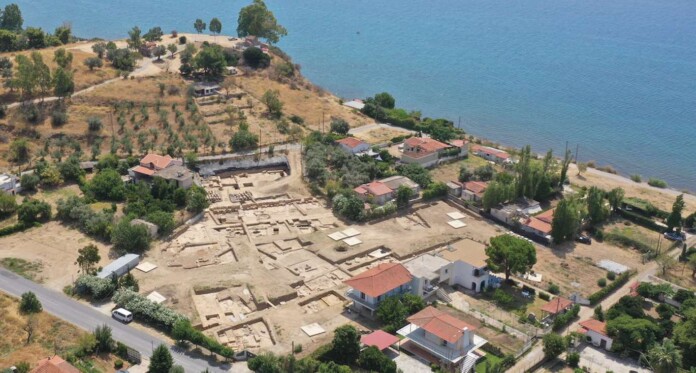
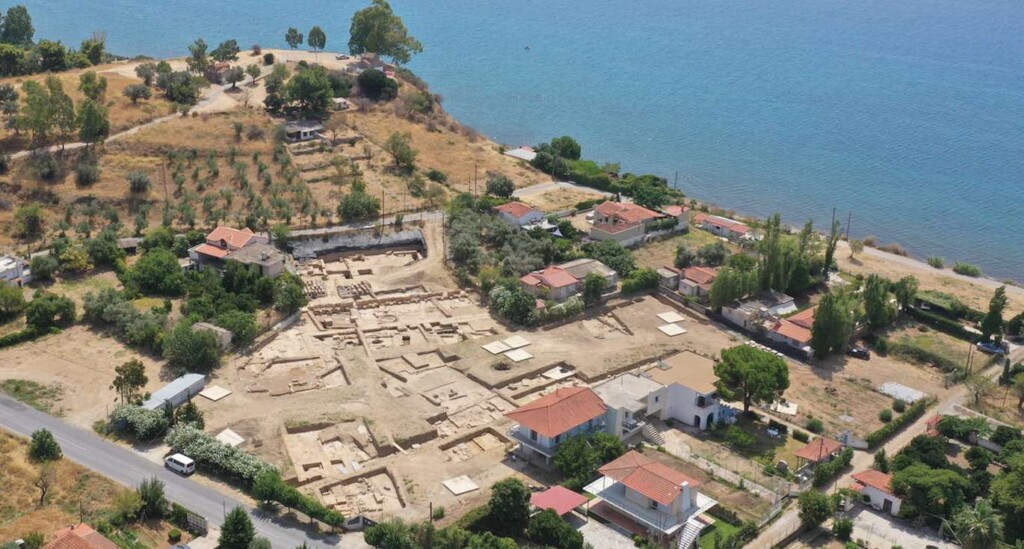
From the magazine of the Archaeological Institute of America comes the story of an immense discovery 120 years in the making.
One of ancient Greece’s most hallowed sites has been uncovered thanks to a determined Swiss archaeologist, a chatty local, and the stroke of luck that brought them together.
The story begins with Strabo, a Roman geographer who gave history’s first account of the Sanctuary of Artemis Amarysia, near the Greek city-state of Eretria on its island of Euboea. (Eretria was one of the earliest city-states and a prolific colonizer of the Mediterranean.)
Several miles from the walls of the city, a magnificent temple complex was built for the worship of Artemis, goddess of the hunt. It was one of the most important sites for ancient Greek religious activities. But, despite its fame and Strabo’s precise location described as seven stades—around 8/10 of a mile—from Eretria’s walls, a flurry of excavation in the late 19th and early 20th centuries uncovered nothing.
Gradually, even the belief that there was such a place called the Sanctuary of Artemis Amarysia came to be questioned, and the quest to find its hallowed walls diminished.
Enter a young doctoral student in classics named Denis Knoepfler, who joined a Swiss archaeological team working in Eretria in the 1960s. By then, efforts to try and find the sanctuary had been ongoing for seven decades, and Knoepler, who told Archaeology Magazine’s contributing editor Jason Urbanus that he had been interested in the history of Eretria for years, decided a new approach was needed if this famous building was ever to be found.
He started by investigating any structure in the surrounding countryside that had reused marble blocks from earlier periods and zeroed in on a 13th-century church built like a patchwork quilt of marble in a town called Vathia. Nearby, earlier excavations had yielded artifacts that depicted Artemis’s form and name, and Knoepfler believed the site of the sanctuary would have been near the sea on a hill called Paleoekklisies, or Old Chapels.
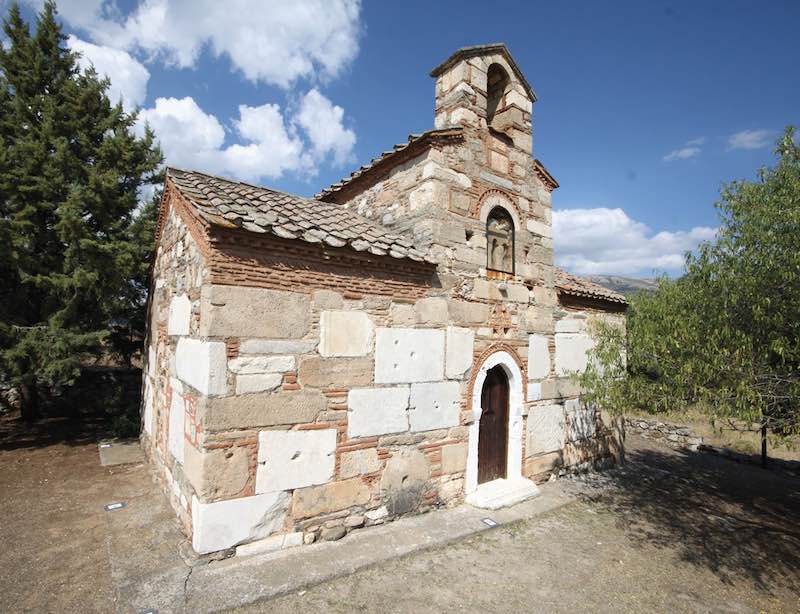
In 1969, he filed a report with the Swiss Archaeological Mission in Greece (ESAG) stating he believed as a result of investigations that the sanctuary “must be” at the foot of that Hill.
So thoroughly did archaeologists working in Eretria believe in Strabo’s account that Knoepfler’s report was largely ignored and never even got published until 6 years ago. However, Knoeplfer continued following his hunch. In the following decades, he demonstrated how medieval monks translating Strabo’s Greek into Latin may have confused the number 7 with 60, because of how Ancient Greek used letters to represent numbers.
Kato Vathia and the Paleoekklisies Hill lay 60 stades away from the walls of Eretria.
As the 20th century gave way to the 21st, a construction boom began at the base of Paleoekklisies Hill, and because nobody had yet found the Sanctuary of Artemis Amarysia, Knoepfler managed to galvanize his department in Switzerland to take his theory seriously and apply for surveying permits before the imagined treasure was buried by modern villas.
MORE STORIES OF TIMELESS DISCOVERY: 13,000 Years Ago, These Ancient Builders Carved a Calendar into Stone to Mark Destructive Occasion
In 2006 they began to excavate on the Paleoekklisies Hill only to find 5,000-year-old artifacts, rather than 2,800-year-old artifacts. The trail seemed to have gone cold, wrote Urbanus in a wonderful feature article for the September edition of the magazine—but in literally the last hours of Knoepfler’s allotted time at the site, a lead materialized from the most unlikely source.
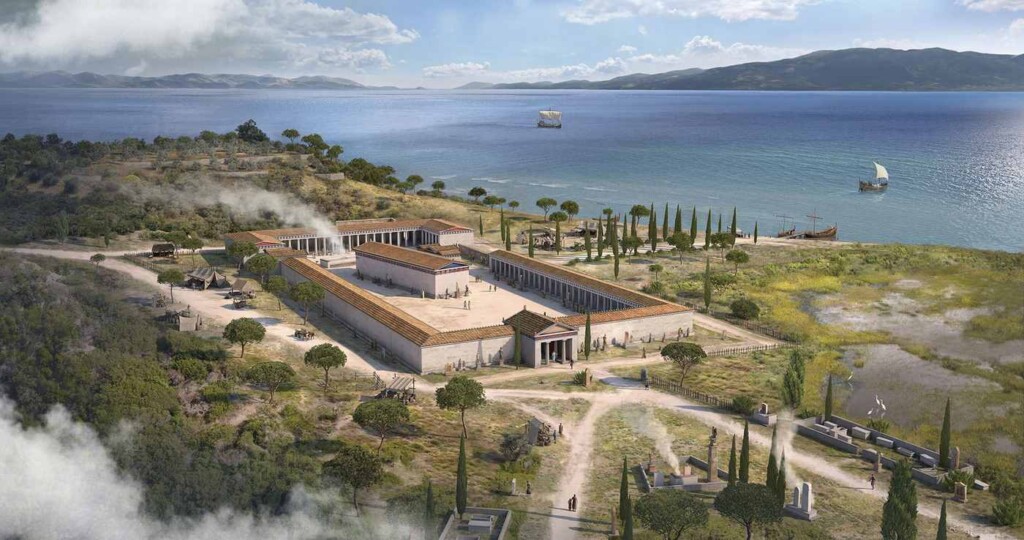
“A local resident approached in a car, rolled down his window, and pointed to a construction site near the base of Paleoekklisies Hill,” writes Urbanus, recounting Knoepfler’s colleague Sylvian Fachard, director of the ESAG who was there at the excavation. “‘You should have a look at that villa that they’re building over there. You’ll find interesting stuff,’” Fachard recalled, quoting the motorist who then drove away.
Among a big pile of pottery, they found a substantial marble block cut with sharp precise angles, which Fachard said was a sure sign the sanctuary must be there, as this sort of masonry is seen only in the most substantial Eretrian structures.
ANCIENT GREEK ARCHAEOLOGY: Greek Archaeologists Use The Iliad as a Map to Find 10 Ancient Shipwrecks
When the two men returned the next day the block had vanished, likely a result of the modern construction ethos throughout Greece, whereby ancient discoveries are often reburied to avoid government confiscation of the land. Knoepfler and Fachard secured another permit to dig nearby and found nothing.
But, much the way the motorist gave them hope when all else had seemed hopeless, the closing stages of their second excavation revealed another clue.
A big hunk of dirt dislodged itself from their excavation trench, and that’s when ESAG archaeologist Thierry Theurillat saw part of a large marble block protruding from the trench wall, nearly seven feet underground.
“It was a second stroke of luck,” Fachard said “If we had put our trench just four inches away, we never would have found a thing.”
16 years later, we now know the Sanctuary of Artemis was found on that day. ESAG bought more than a dozen properties to remove the restrictions on excavating imposed by the private landowners, and many important discoveries of the ancient Greek cult were uncovered.
MORE BIG DISCOVERIES: 2,000-Year-Old Home Found Under a Seaside Playground May Be Pliny the Elder’s Villa
Three colonnaded structures made up the sanctuary, including one that was 225 feet long. In 2017, the first evidence of a temple was uncovered—a terracotta roof tile with the tantalizing word “Artemidos,” meaning “of or belonging to Artemis” embossed in ancient Greek. The next discovery was a makeshift staircase permitting the descent into a nearby well that had been assembled from ancient markers and statue bases, one of which bore an inscription of an agreement made between the city-states of Eretria and nearby Styra “at the Sanctuary of Artemis at Amarynthos.”
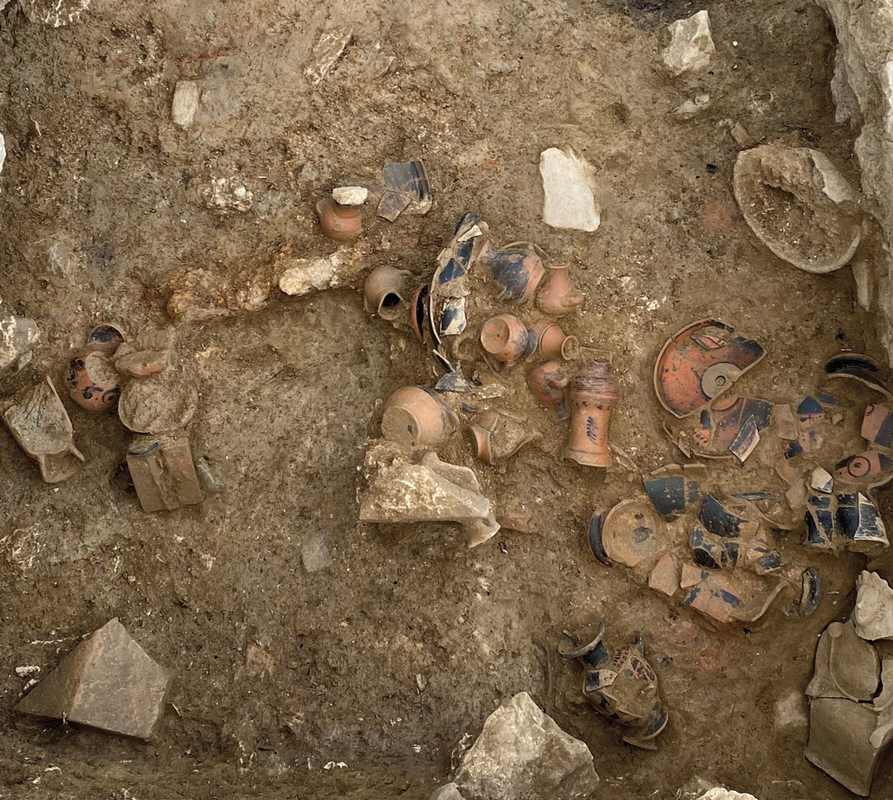
Amarynthos was a Theban word for sanctuary.
Bingo. The 120-year-old mystery had been solved, and as the years of joyful excavating rolled on, ESAG found the temple foundations in 2020 and began exhuming artifacts.
“It’s an unimaginable discovery that impressed us all,” ESAG archaeologist Tamara Saggini told Archaeology Magazine, “on the one hand because of the state of preservation and, on the other hand, because of the size of the deposit, its exceptional variety, and the rareness of many of the objects discovered.”
The working hypothesis is that many of the artifacts were buried in the foundations of the sanctuary after an enormous fire destroyed much of the temple in the 6th century BCE. The builders erected a new temple atop the ruins, sealing all the votive offerings underneath like an ancient time capsule.
YOU’LL BE SURE TO LIKE: 76,000 Gold and Silver Artifacts Recovered from Chinese River Charts Infamous 17th Century Warlord’s Conquests
The dizzying number of treasures include ceramic and bronze vases and vessels of every description, remnants of weapons and armor, jewelry in gold, silver, bronze, amber and ivory, small terracotta figurines, and even the remains of a trunk filled with textiles that were amazingly preserved.
Another standout find was a 16-inch limestone statue of a woman holding a fawn, which might depict a woman offering a sacrifice, or Artemis herself, who is often depicted with deer due to her association with hunting.
“It was a window of literally just a few hours,” Fachard said, thinking back to the tip-off from the motorist. Without that moment, the sanctuary would likely have been lost forever.
SHARE This Amazing Story With Your Friends Who Love This Kind Of Stuff…
Sahara Desert Is Turning Green Amid Unusual Rains in Parts of North Africa


Bountiful rains are greening parts of the Sahara that haven’t had a good soak in years.
An extratropical cyclone pushed across the northwestern Sahara on September 7th and 8th and drenched large, treeless swaths of Morocco, Algeria, Tunisia, and Libya.
At the same time, the Intertropical Convergence Zone, a line of rainfall that floats between a few degrees latitude on either side of the equator between July and September, has pushed farther north than normal, soaking Niger, Chad, and Sudan according to data from NOAA’s Climate Prediction Center.
As a result, these portions of the Sahara Desert are anywhere from twice as wet to more than six times wetter than they normally are.
“When you get these really exceptional rainfall events, the dunes become these just incredibly verdant and flowered fields where the plants will just instantly grow for a short period of time to take advantage,” Peter de Menocal, president and director of the Woods Hole Oceanographic Institution, told ABC News.
Images from NASA’s MODIS Satellite have revealed some of this greening, while at the same time showing that lakes which have long been dry are now filling up, such as one in Morocco’s Iriqui National Park.
Moshe Armon, a senior lecturer at the Institute of Earth Sciences and the Hebrew University of Jerusalem, said in a statement that between 2000 and 2021, Sebkha el Melah, a salt flat in central Algeria, has only filled six times. He suspects this month’s rains will be enough to make that seven.
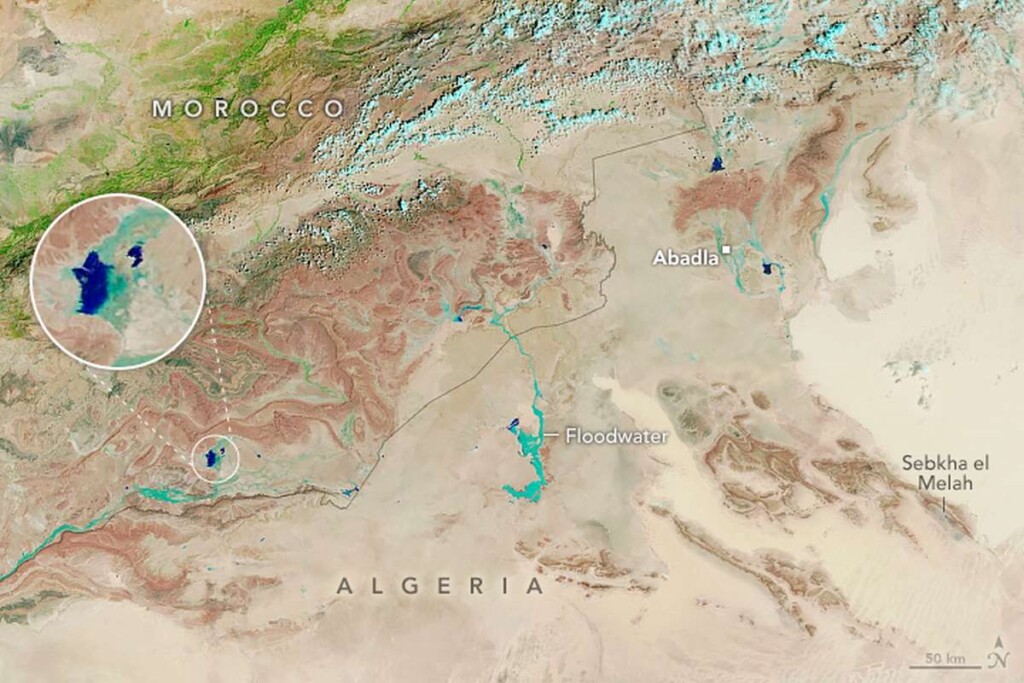
11,000 years ago and beyond, the Sahara looked a lot more like the savannah of Kenya and Tanzania than the world’s largest non-polar desert that we see today. Evidence of this is all over the northern half of the continent, from thousands of fossilized lighting bolts found embedded in soil all over the Sahara, to evidence of rainfall erosion on the body of the Sphinx in Egypt, to the prehistoric footprint of Lake Chad, which is tens of thousands of square miles larger than the current water level.
LIVING IN THE DESERT: Device Pulls Dozens of Liters of Water from the Air–Already Being Installed in Jordanian Desert Homes
The rains this year it must be said have resulted in some ghastly flooding, displacing thousands of people, destroying homes, and costing hundreds of lives.
RAINS ENDING DROUGHTS: Winter Rains Cured California’s Three-Year Drought and Summer’s Record Heat Didn’t Bring a New One
While rich in species diversity, natural beauty, and cultural heritage, living in a desert often means living in poverty, and droughts, which are predicted to increase in severity in the coming years, will strain desert resources all the more. Because so much of desert life and culture is adapted to making the most of freak rainfall events like this one, the water will help preserve delicate livelihoods for months, even years to come.
WATCH the story below from ABC News…
SHARE This Story Of Green Appearing From The Brown On Social Media…
Ancient Mummies Reveal Precise Origins of Kefir in the Human Diet: New Study
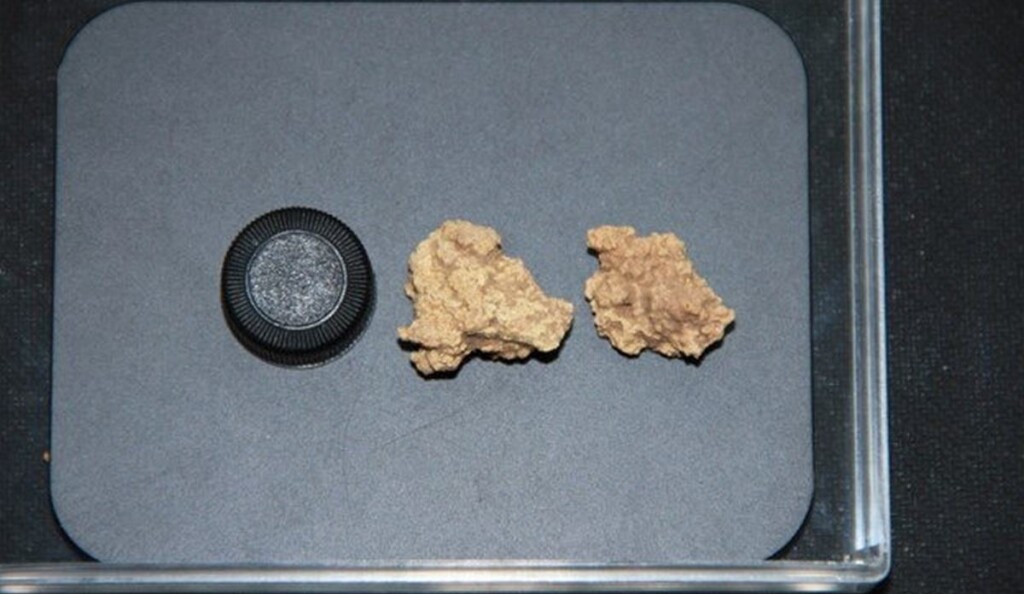
The oldest traces of fermented dairy ever discovered were recently found in western China’s Tarim Basin, dating back 3,600 years.
A DNA analysis shows that rather than being cheese, as the physical profile of the sample suggested, it was actually solidified kefir.
Kefir is a type of fermented milk that offers a great way of fortifying the gut microbiome, but because the name kefir comes from the Turkish word “keyif” which refers to the “good feeling” a person gets after drinking it, kefir has long been thought to originate from the Russian steppes and the Caucasus Mountains.
But this new revelation suggests it hails instead from China.
The ancient cheese samples were found alongside the famous Tarim Basin mummies in China, dating from the Bronze Age around 3,600 years ago. Found in the 20th century, these mummies helped provide a genetic bedrock to underpin scholarship on the great genetic and linguistic melting pot of Central Asia.
The analysis of the cheese sample was carried out at the Chinese Academy of Sciences and published in the journal Cell. It suggests a new origin for kefir and sheds light on the evolution of probiotic bacteria.
“This is the oldest known cheese sample ever discovered in the world,” said corresponding author Professor Qiaomei Fu. “Food items like cheese are extremely difficult to preserve over thousands of years, making this a rare and valuable opportunity.”
“Studying the ancient cheese in great detail can help us better understand our ancestors’ diet and culture.”
Archaeologists discovered mysterious white substances smeared on the heads and necks of several mummies found in the Xiaohe cemetery in China’s Tarim Basin around 20 years ago. The mummies date back about 3,300 to 3,600 years ago.
ANCIENT FOOD RESEARCH: 4,000-year-old Tablet Describes Ancient ‘Lunchables’ of Cheese and Meat Carried in a Box
At the time of the discovery, researchers thought the substances might be a type of fermented dairy product, but they couldn’t identify exactly what kind. Central Asian nomads of all sorts relied on dairy as a food source, and fermented mare’s milk was the chief item in the famously revolting Mongolian diet, according to Chinese sources.
Now, after more than a decade of advancements in ancient DNA analysis, a team led by Professor Fu has unraveled the mystery. The Chinese research team successfully extracted mitochondrial DNA from samples found in three different tombs at the cemetery.
They identified cow and goat DNA in the cheese samples.
Fu said the ancient Xiaohe people used different types of animal milk in separate batches, a practice differing from the mixing of milk common in Middle Eastern and Greek cheesemaking.
CENTRAL ASIAN ARCHAEOLOGY: 2,000-year-old Gold Jewelry from Mysterious Central Asian Culture Discovered in Kazakhstan
The researchers also managed to recover the DNA of microorganisms from the dairy samples which confirmed that the white substance was in fact kefir and not cheese.
They found that the samples contained bacterial and fungal species, including Lactobacillus kefiranofaciens and Pichia kudriavzevii, both commonly found in present-day kefir grains.
Kefir grains contain multiple species of probiotic bacteria and yeast, which ferment milk into kefir, much like a sourdough starter. Being able to sequence the bacterial genes in the ancient kefir gave the researchers the chance to track how probiotic bacteria evolved over the past 3,600 years.
They compared the ancient L. kefiranofaciens (from the kefir) with the modern-day species and found that the ancient sample was more closely related to strains identified as the origin of the species which hail from Tibet—challenging a long-held belief that kefir originated solely in the North Caucasus mountain region of present-day Russia.
The Russian L. kefiranofaciens is the most widely used globally, including in Europe, the United States, and Japan, for making yogurt and cheese.
HISTORY OF FRENCH CHEESE: First Ever Cheese Museum Opens in Paris: ‘It’s Gouda Brie a Delicious Visit’
“Our observation suggests kefir culture has been maintained in northwestern China’s Xinjiang region since the Bronze Age,” said Fu.
The study also revealed how L. kefiranofaciens exchanged genetic material with related strains, improving its genetic stability and milk fermentation capabilities over time.
These genetic exchanges helped Lactobacillus become more adapted to human hosts over thousands of years of interaction, as compared with ancient Lactobacillus, modern-day bacteria are less likely to trigger an immune response in the human intestine.
“This is an unprecedented study, allowing us to observe how a bacterium evolved over the past 3,000 years,” said Professor Fu. “Moreover, by examining dairy products, we’ve gained a clearer picture of ancient human life and their interactions with the world.”
“This is just the beginning, and with this technology, we hope to explore other previously unknown artifacts.”
SHARE This Amazingly Precise Discovery Of Ancient Food Culture…
“You can find peace amidst the storms that threaten you.” – Joseph B. Wirthlin
Quote of the Day: “You can find peace amidst the storms that threaten you.” – Joseph B. Wirthlin
Photo by: Getty Images for Unsplash+
With a new inspirational quote every day, atop the perfect photo—collected and archived on our Quote of the Day page—why not bookmark GNN.org for a daily uplift?

Good News in History September 27

Happy 48th Birthday to Il Capitano—Francesco Totti. The most iconic Italian football forward of the 21st century, Totti spent a 25-year professional career in the red and orange on the AS Roma team—and is remembered as one of the greatest players of his generation. In 619 appearances for Roma he scored 250 goals, the second most of any player in the history of Italian football, and won a single Serie A title, two Coppa Italia titles, and two Supercoppa Italiana titles. For Italy, he was crowned a world champion in the 2006 FIFA World Cup after playing a pivotal attacking role in all seven games. READ more about Roma’s greatest player… (1976)
Vertical Greening Brings Nature to Urban ‘Heat Islands’ Quickly and Easily (LOOK)

Now at the London Design Festival, a nifty piece of “street furniture” allows for rapid urban greening with little effort and maximum impact.
“Vert” is a simple polygonal assembly of boards, nets, and ropes that will allow climbing plants to scale quickly and easily, bathing an area of exposed concrete in shade and moisture.
The idea behind Vert is to provide cities with solutions to combat the Urban Heat Island effect, a thermodynamic phenomenon in which cities heat up and retain heat faster and longer than more natural environments.
“This structure is, in a way, constructed like a street furniture,” Stefen Diez, Vert’s lead designer, told Reuters. “It’s like a shelf that you put onto a place or on the street so the cars can still pass underneath, the bicycle can go underneath and the people can still walk, but they can also sit and rest.”
One of the main drivers of the heat island phenomenon is that flat-faced buildings which easily absorb heat radiate it out onto other, flat, heat-intolerant buildings or black asphalt. In this way, the radiation from the Sun has no place to go, and continues to bounce around all day.
Go touch the side of a tree on a hot summer’s day and see how warm it is compared to sun-bathed concrete, or street paving compared to the soil in an open field. Vert’s plant arrangement helps combat this by adding moisture, shade, and uneven green surfaces for radiative heat to bounce onto.
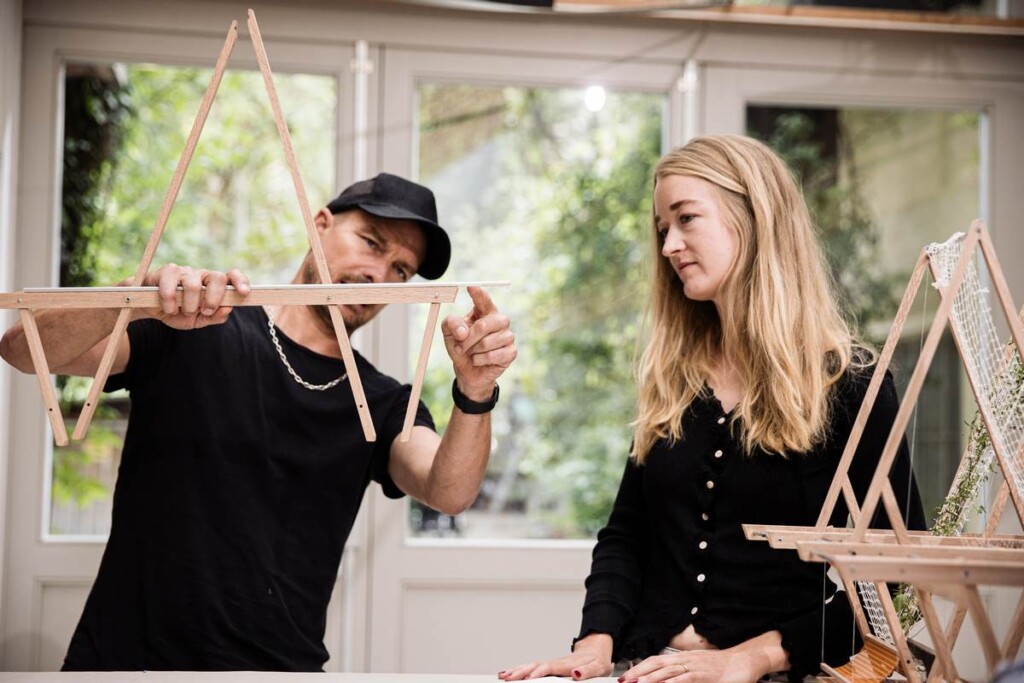
Devised in a three-way collaboration between Stefan Diez’s industrial design studio Diez Office, the American Hardwood Export Council (AHEC), and urban greening specialists OMCºC, Vert was unveiled at the Chelsea College of Arts at the London Design Festival.
URBAN GREENING IDEAS: ‘Sponge’ Cities Combat Urban Flooding by Letting Nature Do the Work
The AHEC recommended Diez use boards of American red oak, as it grows fast, absorbs a lot of carbon throughout its lifetime, and has the appropriate mechanical properties for the structure.
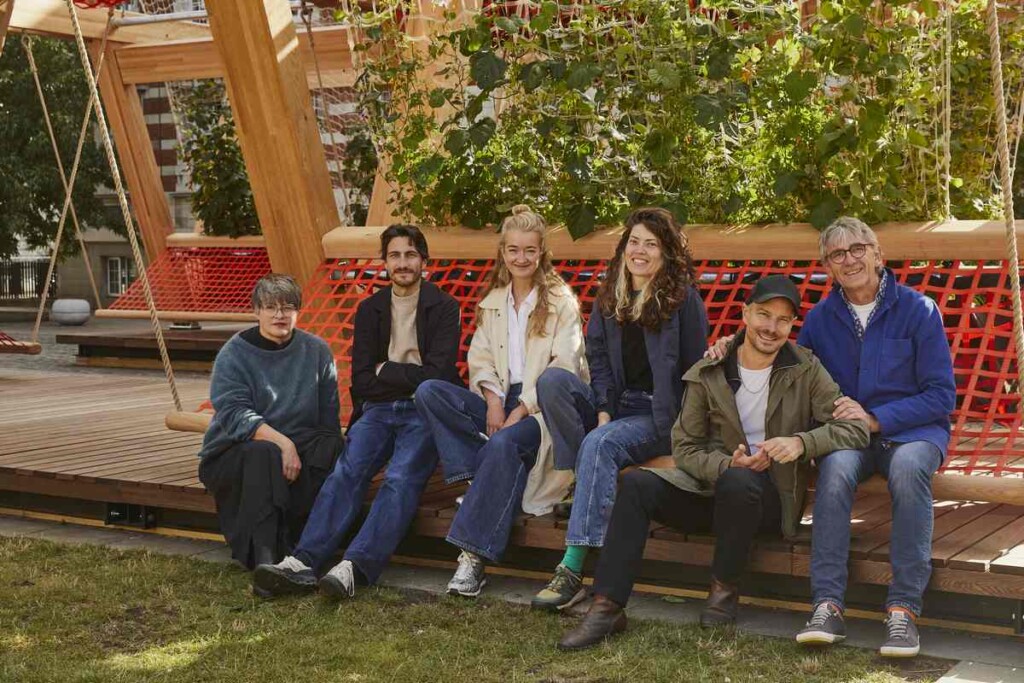
Vert’s triangular shape is fundamental to the structure’s performance, allowing for a robust construction that uses minimal materials while being capable of resisting wind from all angles and absorbing the weight of the plants.
ALSO CHECK OUT: Build Zigzag Patterns On Exterior Walls to Keep Buildings Cooler During Heat Waves
The triangle also lends itself to modularity, allowing for the system to be extended or to change in direction to suit different settings, without affecting the resistance of the structure. It also provides the perfect scaffolding to hang these nifty benches of netting.
WATCH the story below from Reuters…
SHARE This Good-Looking Piece Of Street Furniture With Your Urbanite Friends…
Moderate Coffee and Caffeine Consumption Is Associated with Preventing Onset of #1 Killer

Regular coffee or caffeine consumption may offer a protective effect against developing multiple cardiometabolic diseases like coronary heart disease and stroke, the most common killers in human society today.
Detailed in new research published in the Endocrine Society, three cups of coffee per day were associated with those in the study cohort who had a lower profile for a novel risk marker called “new-onset cardiometabolic multimorbidity.”
Cardiometabolic multimorbidity (CM) refers to the coexistence of at least two cardiometabolic diseases, and the prevalence of individuals with CM is becoming an increasing public health concern as populations age around the world, notes the study.
The COVID-19 pandemic showed that the burden of co-morbidities in high-income countries means that swaths of the population are at all times especially vulnerable to novel infections, particularly upper respiratory tract infections.
Coffee and caffeine consumption could play an important protective role in almost all phases of CM development, the researchers from China and Sweden found.
“Consuming three cups of coffee, or 200-300 mg caffeine, per day might help to reduce the risk of developing cardiometabolic multimorbidity in individuals without any cardiometabolic disease,” said the study’s lead author Chaofu Ke, M.D., Ph.D. at Suzhou Medical College of Soochow University, in Suzhou, China.
The study found that compared with non-consumers or consumers of less than 100mg caffeine per day, consumers of a moderate amount of coffee (3 drinks per day) or caffeine (200-300 mg per day) had a 48.1% or 40.7% reduced risk for new-onset CM.
Dr. Ke and his colleagues based their findings on data from the UK Biobank, a large and detailed longitudinal dietary study with over 500,000 participants aged 37-73. The study excluded individuals who had ambiguous information on caffeine intake.
The resulting pool of participants included a total of 172,315 individuals who were free of any cardiometabolic diseases at baseline for the analyses of caffeine, and a corresponding 188,091 individuals for the analyses of coffee and tea consumption.
OTHER SIMPLE DIETARY ADDITIONS: These Superfoods Can Provide Important Nutrients With a Single Bite
The participants’ cardiometabolic diseases outcomes were identified from self-reported medical conditions, primary care data, linked inpatient hospital data, and death registry records linked to the UK Biobank.
Coffee and caffeine intake at all levels were inversely associated with the risk of new-onset CM in participants without cardiometabolic diseases. Those who reported moderate coffee or caffeine intake had the lowest risk, the study found. Moderate coffee or caffeine intake was inversely associated with almost all developmental stages of CM.
COFFEE HEALS: Coffee and Tea Drinking May be Associated With Reduced Rates of Stroke and Dementia
“The findings highlight that promoting moderate amounts of coffee or caffeine intake as a dietary habit to healthy people might have far-reaching benefits for the prevention of CM,” Ke said.
Numerous epidemiological studies have revealed the protective effects of coffee, tea, and caffeine consumption, some of which GNN has reported on before.
SHARE This Great News Over A Cup Of Coffee With Your Friends…
Researchers Discover 200-year-old Message in a Bottle: A ‘Magic Moment’
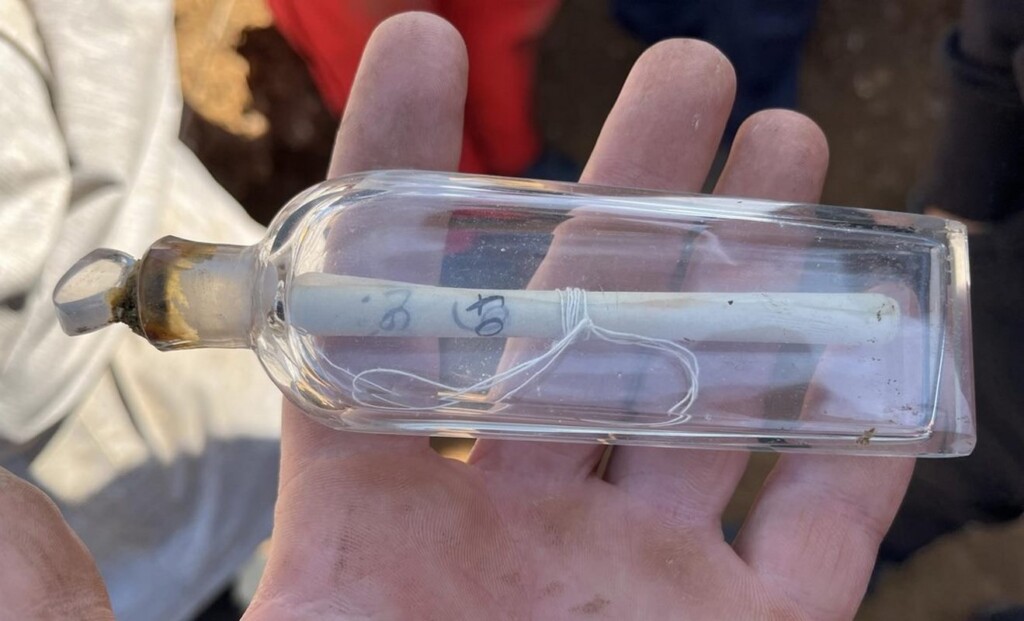
A team of student archaeologists in France received an amazing surprise while working on a site dating to Gaulic times.
Carried out under the direction of Guillaume Blondel, director of the municipal archaeological service of the city of Eu, the excavations delivered, among other things, a moving and very special testimony from the past.
Located in a previously investigated section of the site, a message was discovered in a small glass bottle from the 19th century accompanied by two coins: a “time capsule” buried almost 200 years ago, a statement from the service read.
“P. J. Féret, a native of Dieppe, member of various intellectual societies, carried out excavations here in January 1825. He continues his investigations in this vast area known as the Cité de Limes or Caesar’s Camp.”
The message in a bottle had been carefully placed in a ceramic pot dating to a much earlier century so that future archaeologists would be sure to find it.
“It was an absolutely magic moment,” Mr. Blondel told the BBC. “We knew there had been excavations here in the past, but to find this message from 200 years ago… it was a total surprise.”
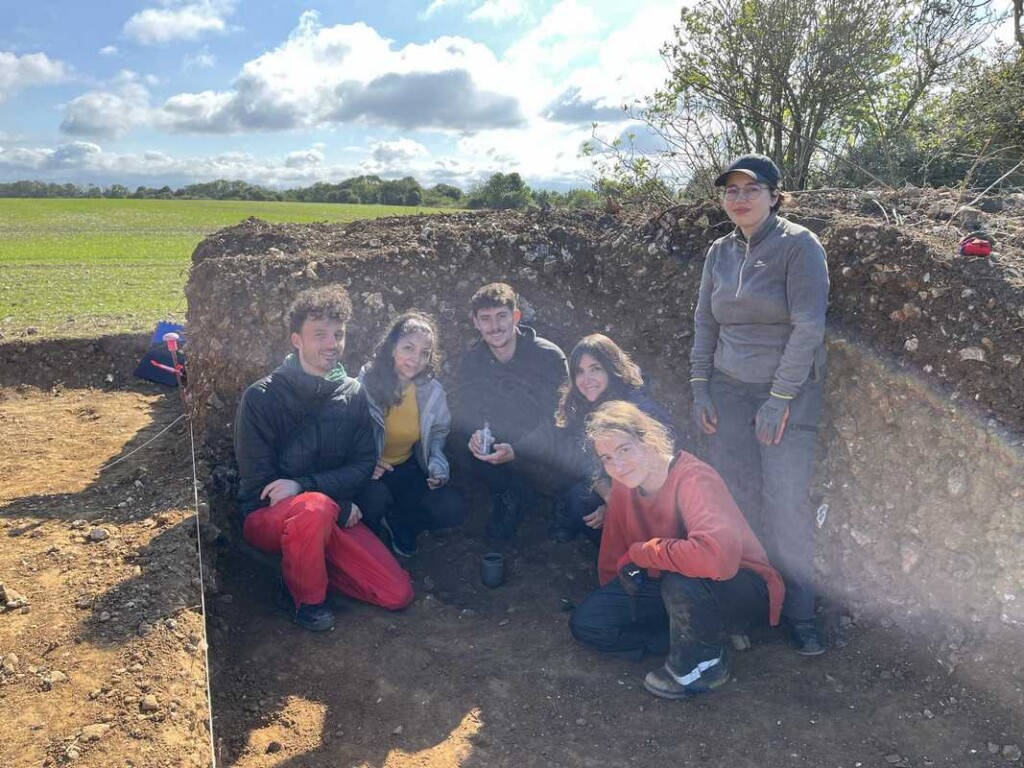
“Sometimes you see these time capsules left behind by carpenters when they build houses. But it’s very rare in archaeology. Most archaeologists prefer to think that there won’t be anyone coming after them because they’ve done all the work!”
YOU MAY ALSO LIKE: Teen Girl’s Secret Message Left in a Wall 48 Years Ago is Found: ‘I was Absolutely Shocked!’
Local archives indeed place P. J. Féret in the area as a historical excavator at the time the letter was dated.
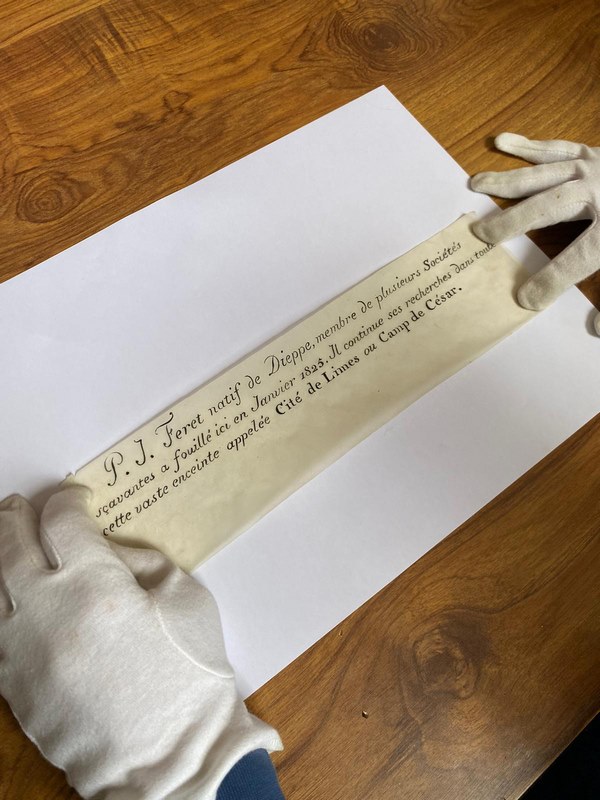
The work was funded and carried out in partnership with the Regional Archaeology Service to preserve archaeological sites that are endangered with the decline of the coastline. Already a part of the ‘oppidum’ or fortified Gaulic camp, has fallen away with the crumbling of the coastal hillside on which it was perched.
The Gauls were a series of interconnected feudal (at best) and tribal (at worst) societies that shared societal, cultural, and warrior practices, and who inhabited most of central and western Europe during the time of the Roman Republic.
MORE TIME CAPSULE STORIES: Time Capsule Buried by Paul Revere and Sam Adams Discovered in Boston
Gaius Julius Caesar waged a campaign to pacify Gaul, hence the name “Caesar’s Camp,” which brough Spain, France, and Belgium, under Roman control.
SHARE This Charming Story Of Surprise, Highlighting The Importance Of Local Archaeology…
To Save Sea Turtle Population Invasive Deer Successfully Eradicated from Island in Australia’s Great Barrier Reef


In Australia, wild deer that were destroying sea turtle habitat on an island near the Great Barrier Reef have been eradicated.
The result is that Australia’s largest flatback turtle rookery is now a safe haven for these ocean-goers once again.

It’s just the latest in a string of high-profile success stories from islands all over Australia’s territorial waters, where conservationists are achieving their goals of returning these isolated ecosystems back to how they were before Europeans arrived.
Bringing goats, deer, rats, cats, foxes, rabbits, and other European wildlife along with them, they greatly disrupted sensitive sub-tropical biomes on islands like Macquarie, Lord Howe, and Middle.
Wild Duck Island sits off the northeastern coast between Rockhampton and Mackay in the state of Queensland. Here, Queensland Parks and Wildlife Service believes that Rusa deer were introduced illegally in 2003 to create a hunting population, but with no natural predators, they quickly multiplied until they began to threaten other species.
“The deer were down in among the dunes when the turtles were coming up and trying to nest … up until they start laying, if anything disturbs them, they will return back to the water,” Southern Great Barrier Reef principal ranger David Orgill told ABC News AU.
They were also trampling the eggs and nests themselves: something which became apparent as late as 2018. Understanding the gravity of the situation, as the flatback turtle has the smallest range of any sea turtle, meaning there aren’t many other places these reptiles nest, conservationists started to use thermal imaging cameras and trail cams to track the deer population.
ALSO CHECK OUT: 6 Saplings of Dinosaur-Era Tree Species Being Auctioned to Spread the Pines Around Australia
By 2023 they had removed over 270 deer, and earlier this year, a camera trap survey recorded no signs of the Rusa deer on Wild Duck Island.
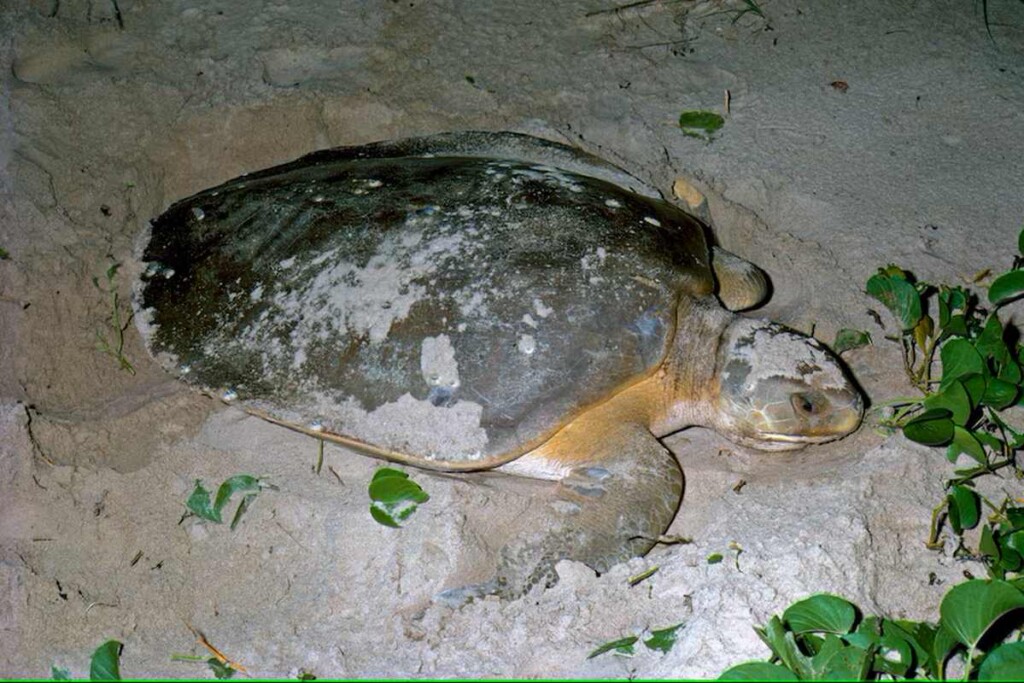
48 islands make up Broad Sound Islands National Park, and others remain infested with invasive species. The combination of thermal and night vision cameras used on Wild Duck is believed to be suited to other islands as well.
GNN reported earlier this year that the greatest conservation success story never told was the progress humanity has made in returning islands back to their natural state. Wild Duck joins a list of hundreds of islands, as famous as the Galapagos, and as obscure as Redonda.
RIGHT UP YOUR ALLEY: The Greatest Conservation Story Ever Told Isn’t Really Being Told
The work has preserved or returned habitat for thousands of species on hundreds of islands in all four oceans, many of which act as important nodes of shelter and food for migrating seabirds and undersea life as well.
SHARE This Wonderful News For These Turtles Down Under…
“Everything that is made beautiful and fair and lovely is made for the eye of one who sees.” – Rumi
Quote of the Day: “Everything that is made beautiful and fair and lovely is made for the eye of one who sees.” – Rumi
Photo by: Ben Blennerhassett (cropped)
With a new inspirational quote every day, atop the perfect photo—collected and archived on our Quote of the Day page—why not bookmark GNN.org for a daily uplift?
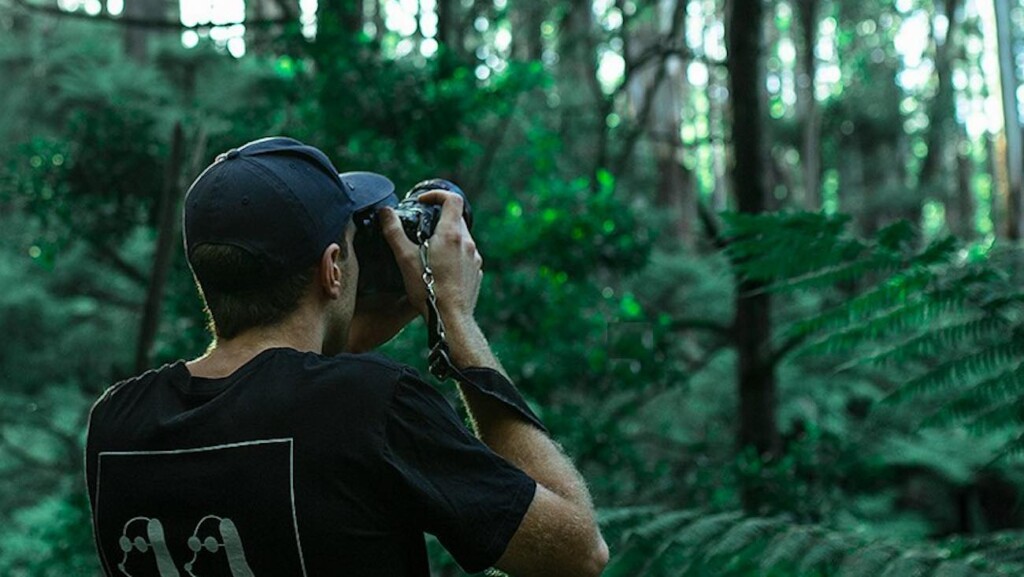
Good News in History September 26
41 years ago today, the lives of two Soviet cosmonauts, Gennady Strekalov and Vladimir Titov, were saved in the only use of an emergency shuttle eject system in the history of manned spaceflight. Their Mission Soyuz-U was on the launch pad when mission control detected a serious fuel leak in the rockets. A mere 20 seconds before the rockets exploded and obliterated the launch infrastructure beyond repair, Strekalov and Titov were launched 4.5 miles from the site at Mach 10 in their space shuttle, but miraculously suffered no serious injuries. READ about what they accomplished thanks to their ‘second birthday’… (1983)
Inspired by Avatar and His Asthma, Indian Man Creates ‘Biosphere’ to Connect Adjacent Land to National Park
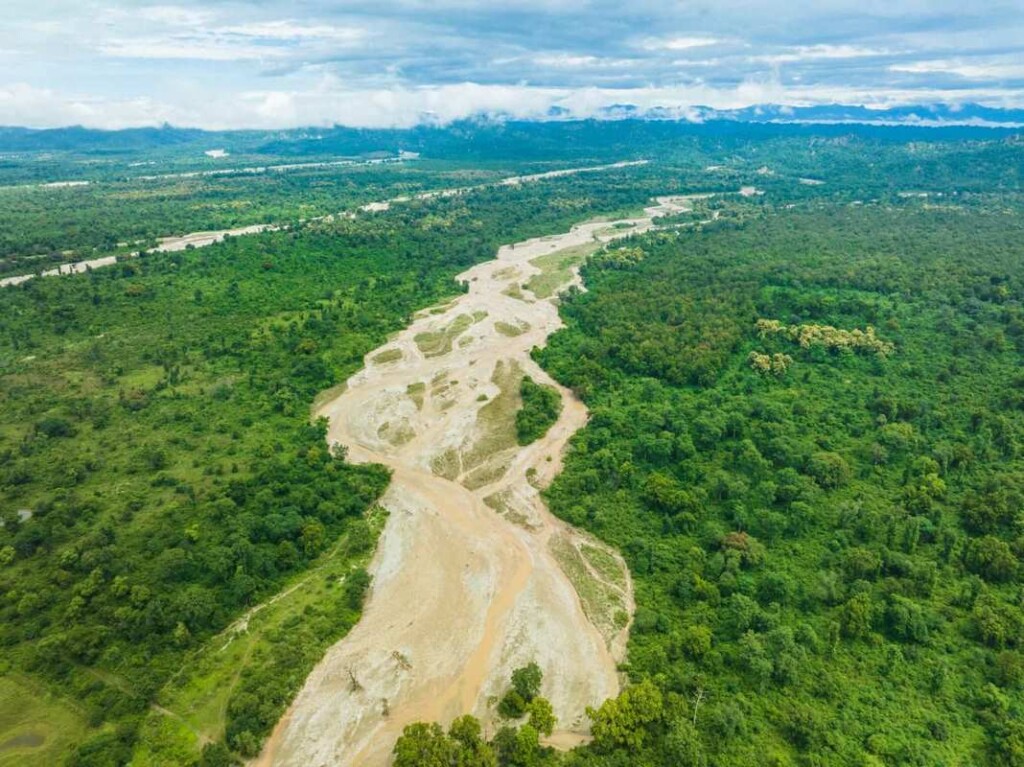
It’s being called India’s first private biosphere—a 32-acre forest haven bursting with life and inspired by James Cameron’s Avatar.
Environmentalist and clean air activist Jai Dhar Gupta dreamt of a place like Pandora, the fictional planet in the film—a luscious Darwinian playground of evolution vibrant with sound and color.
For the entrepreneur’s 50th birthday, he teamed up with renowned Indian rewilding expert Vijay Dhasmana to make his dream come true.
Gupta had by then plenty of reason to want to build a haunt in nature—years of competitive running in Delhi had left him with bronchial asthma from the polluted air of the city.
Following extensive activism and private-public collaboration to improve air quality, he decided to ring in the second-half of his life with a new project.
In 2021, he discovered a stunning piece of land nestled between the Rajaji National Park and Tiger Reserve and the Raghati River. It was stunning because of its potential, but at the time Gupta and Dhasmana found it, it was a degraded shadow of its formerly wild self.
“It had been previously flattened, eroding natural contours and leading to severe soil erosion. Moreover, since monoculture agro-forestry with non-native eucalyptus trees was practiced on the land, it deteriorated the ecosystem’s health further,” Dhasmana told The Hindu. “Thousands of non-native eucalyptus trees were removed within days of acquiring the land. Subsequently, the land was contoured to retain water, prevent erosion, and promote groundwater recharge.”
Once this foundational change had been made, the duo and their teams conducted extensive forest surveys to observe how the mixture of plants and shrubs is naturally distributed around the landscape.
“We collected seeds, established a seed bank, and collaborated with biodiversity parks to germinate and cultivate saplings of trees such as haldu, rohini, mala, saal, jamun, pangana, etc., which were then planted across the biosphere,” said Gupta.
PRIVATE NATURALISM: ‘Give Nature Space and it Will Come Back’: Rewilding Returns Endangered Species to UK Coast
A biosphere, he told The Better India, is a micro-environment. “It’s a zone of life. We’ve got the tiger reserve next to us, but it’s not pure, due to the invasion of non-native species like eucalyptus trees. We are working on creating a pure environment, growing only what nature intended for in this particular area,” he says, adding, “I’m chasing what we saw in that movie Avatar.”
Following this monsoon season, they plan to introduce another 30 to 40 species of plants into the park which sits along the borders of the National Park and agricultural land.
Because the whole landscape is privately owned by Gupta, he decided to ban all motor vehicles from entering it. The now incredible panoply of life lives as undisturbed as possible amid the forest.
ALSO READ: The First of 2,000 Privately Owned White Rhinos Get New Home – Rewilded by South African Conservancy
This includes leopards, sambar and cheetal deer, elephants, monitor lizards, hornbills, serpent eagles, and white-throated kingfishers.
The 132 species of native plants are protected by strict rules barring visitors from bringing any single-use plastic, and any seed-containing foods. A single electric farm utility vehicle that doubles as a safari jeep is present in the biosphere.
GOOD GREEN NEWS FOR INDIA: Tiny Indian Ocean Island Shows How Quickly Seabirds Recover When Invasive Predators Are Removed
There are two small, pre-fabricated homes for overnight stays, but nothing about the RRB is designed for eco-tourism. Instead, it’s a living manifesto—a propaganda tool to give an inspirational glimpse, to those who are curious, about what a rewilded plot of land can look like in the subcontinent.
“The rule in this biosphere is that nature comes first, not humans,” says Gupta.
SHARE This Incredible Idea From A Big City Entrepreneur…






















